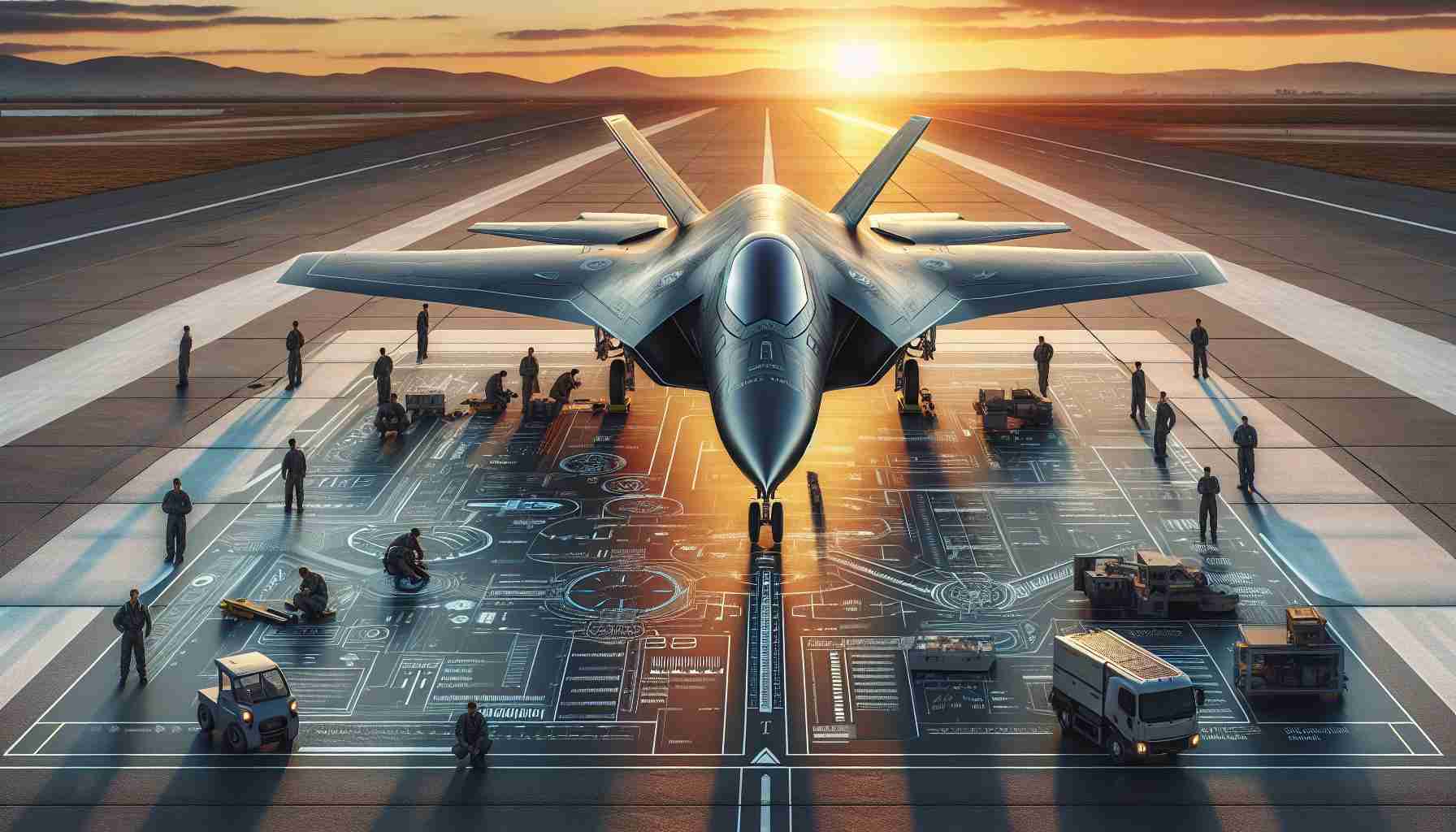- The F-35 fighter jet, a key component of U.S. defense, faces escalating concerns over costs and performance.
- Fleet availability has decreased significantly over the past five years, with the program’s lifetime cost now reaching $1.58 trillion.
- Efforts to modernize the F-35 with advanced radars and weaponry face delays due to software issues and engine overheating.
- Recent operational incidents, including a crash in Alaska, exacerbate fears about the jet’s reliability.
- Industry figures, like Elon Musk, question the F-35’s viability and explore alternatives such as drone warfare.
- Continued challenges necessitate critical reevaluation of the F-35’s role and future in military strategy.
Soaring through the clouds with the grace of a faltering giant, the F-35 fighter jet—America’s showpiece in military aviation—has become a hotbed of concern as its ambitions skyrocket beyond reach. Despite being the crown jewel of U.S. defense strategy, the F-35 faces a turbulent reality.
The U.S. Government Accountability Office paints a stark picture: over the past five years, fleet availability has plummeted while costs spiral out of control. The behemoth project’s lifetime price tag, which has surged to a jaw-dropping $1.58 trillion, casts a shadow of doubt over its sustainability. Achieving just a fraction of its targeted flight projections due to reliability woes, this modern marvel risks devolving into an extravagant paperweight.
Tongues wag as technical snags doom ambitious upgrades. An eye-watering $16.5 billion modernisation effort, promising cutting-edge radars and fearsome weaponry, stalls in a quagmire of software instability. Even the F-35’s heartbeat—the engine—wobbles under unresolved overheating issues, threatening to ground the fleet permanently.
Adding fuel to the fire, operational hiccups paint a chilling image. The recent fiery crash in Alaska, accompanied by the pilot’s harrowing ejection, echoes hauntingly across the aviation landscape. With each mishap, the thunderous question grows: Is the F-35 a soaring achievement or just a colossal misfire?
Amid rising turbulence, industry titans like Elon Musk stir the pot, critiquing the fighter’s design and pondering a shift toward drone warfare. Meanwhile, President Trump dangles the jet as a potential carrot for allies like India, yet each offer comes with a cautionary tale of cost and complexity.
As political and military spheres scramble for answers, the F-35 remains a paradox in the skies. Beyond its sheen of technological prowess hangs an albatross of cost and complication, demanding an urgent course correction before it’s too late.
The F-35: Sky-High Costs and Grounded Potential – Is It Worth the Investment?
How-To Steps & Life Hacks: Maximizing the F-35’s Potential
1. Cost Management Strategies: For the F-35 to become a sustainable part of defense, aggressive cost management is crucial. This can involve prioritizing key technological upgrades while deferring less critical enhancements.
2. Enhancing Software Stability: Addressing software instability involves adopting agile development practices, frequent testing, and incorporating feedback loops to quickly resolve bugs.
3. Preventative Maintenance: Regularly scheduled maintenance checks with a focus on preemptive replacement of high-wear parts can improve fleet availability and reduce unexpected failures.
Real-World Use Cases
– Military Readiness: Despite its issues, the F-35 remains key to U.S. and allied air superiority. Its stealth technology and advanced sensor systems offer unparalleled battlefield awareness.
– Training and Simulation: The F-35’s sophisticated simulation systems provide invaluable training for pilots, enhancing skills without the associated costs of actual flight time.
Market Forecasts & Industry Trends
The F-35 project reflects a broader trend towards integrating advanced avionics and stealth capabilities in military aircraft. According to defense analysts, the global military aircraft market is expected to grow, driven by rising tensions and the need for modernization.
Reviews & Comparisons
When compared to other 5th generation fighter jets like the Russian Su-57 or China’s J-20, the F-35 excels in stealth and software integration but lags behind in cost-efficiency and some aerodynamic capabilities.
Controversies & Limitations
– Overheating Engine Issues: The F-35’s engine overheating remains unresolved, posing risks of grounding which could affect mission readiness.
– Software Delays: Criticism persists over software delays, which have impeded the implementation of critical upgrades.
Features, Specs & Pricing
– Features: Advanced stealth, multi-role capabilities, state-of-the-art avionics, and networked operational systems.
– Pricing: Each aircraft comes with a price tag around $80 million, though total lifecycle costs push the per-unit figure much higher.
Security & Sustainability
The F-35’s reliance on cutting-edge technology also introduces potential cybersecurity risks. Ensuring robust security measures is critical to protecting sensitive systems from cyber threats.
Insights & Predictions
Despite current challenges, the F-35 program is gradually moving towards stabilization, with recent efforts focusing on resolving technical issues and reducing operational costs.
Tutorials & Compatibility
The F-35’s training systems are compatible with older fighter platforms, aiding pilots transitioning to the new jet. However, ongoing updates are necessary to ensure cross-platform interoperability.
Pros & Cons Overview
– Pros: Unmatched stealth capabilities, advanced avionics, versatility across mission types.
– Cons: High costs, software instability, engine reliability concerns.
Actionable Recommendations
– Streamline Upgrades: Prioritize software development and stability updates to minimize operational disruptions.
– Leverage Technology: Focus on integrating AI and machine learning to predict maintenance needs and improve efficiency.
For further insights into defense technology and aviation advancements, visit Lockheed Martin or GAO.
In conclusion, while the F-35 has its shortcomings, strategic management of costs and technical improvements could transform it into a triumphant success rather than a financial sinkhole.










